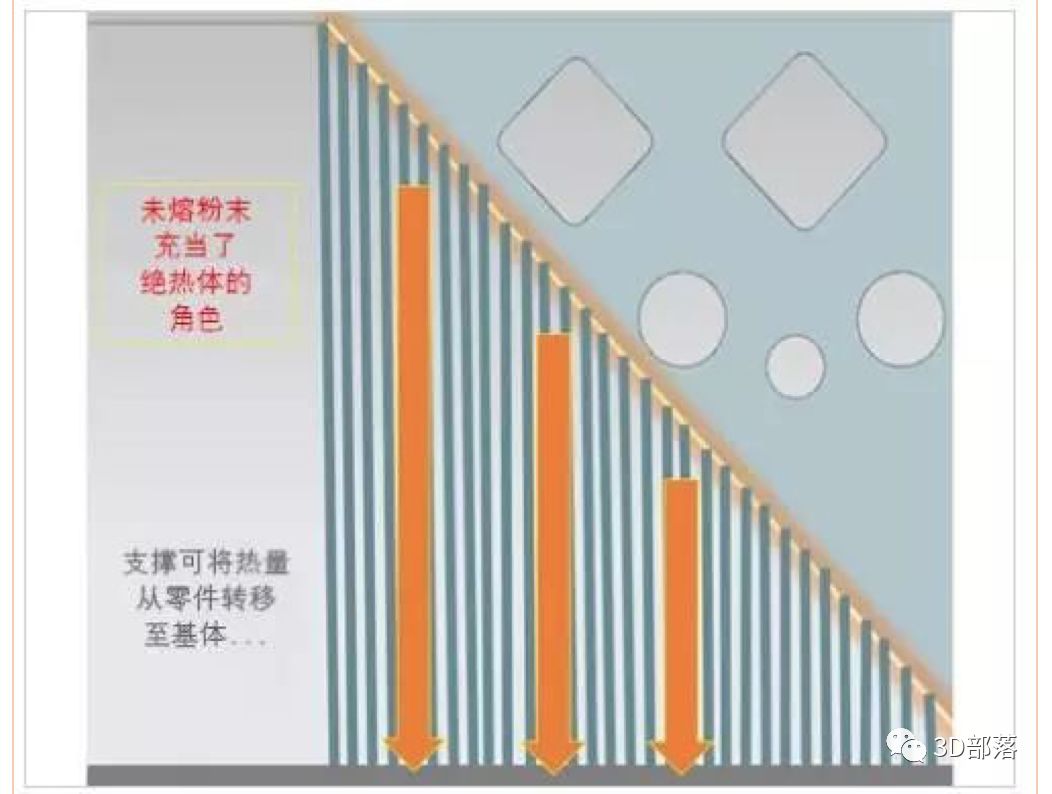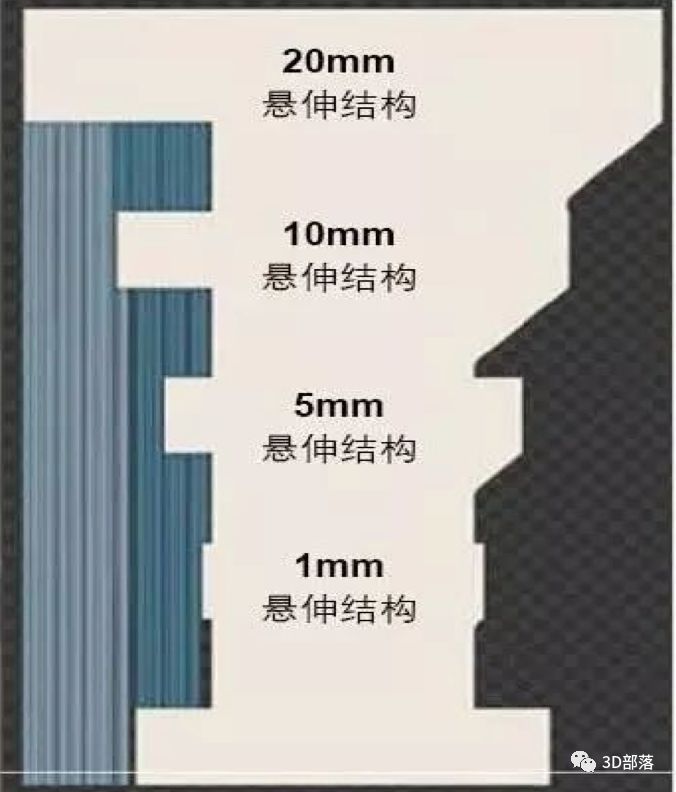In the last issue, I introduced the metal 3D printing in the direction of the precautions, then the problem of the placement is solved. The next step is to add support to the support. Let me explain the mystery. Although we can reduce the support as much as we can by design, it is impossible to completely eliminate the support. However, as long as there is support, it means that the processing cost is increased, the processing time is prolonged, and the post-processing is cumbersome. Therefore, the choice of the support method needs to be considered for the above three points.
Support function

Physical support:
The support can be used to secure the lower surface portion. (the part with an angle less than 45° and a local minimum point)
Residual Stress:
Residual stress that cannot be solved by machining design and placement can be offset by support to offset some of the residual stress. Prevent parts from deforming or machine parts from the substrate.
Thermal conductivity:
The powder is a thermal insulator. The support can carry away a portion of the heat in the lower surface area, which helps to avoid excessive melting, discoloration, and deformation of the underlying surface powder.
Do not add support limits:
If the part geometry is more fragile than the support, there is a higher risk of part damage during post-processing. Holes and supports in the pipe are difficult to remove and may require subsequent processing. Similarly, too little support can make removal difficult. Generally, the horizontal overhang structure within 1 mm can support itself. A horizontal overhang structure of more than 1 mm requires the addition of support. Or add rounded corners and chamfers to eliminate the overhang structure without affecting the practicality of the part itself.

Horizontal detail and small features:
Lateral holes exposed on the sides of the part may also require support. The minimum size of holes that can be machined on most metal printing equipment is 0.4 mm in diameter.
Holes and pipes larger than 8 mm in diameter will need to be supported at their center. Holes with a diameter between these two dimensions can be machined without the addition of support, but some deformation may occur on the surface of the underlying surface due to the slower cooling rate of the molten pool above the overhang.
Since the roundness of horizontal holes is probably not ideal, a more feasible method is usually to change their shape so that they can support themselves. In some cases, teardrop or diamond shaped holes are acceptable final features. Both profiles are available for fluid passages and provide similar hydraulic performance, but the diamond shaped holes are better able to withstand fluid pressure.
In other cases, post-processing is required if high-precision round holes are required. In many cases, it is probably the most sensible way to machine the holes in the additive manufacturing stage, but to drill holes in the solid structure during the post-processing stage.
Suggestions for support:
1. Change the hole with a diameter of 8mm or more into a diamond hole of its own support structure.
2, use rounded corners or chamfers to avoid tricky support
3, rotating the part to make the lower surface part deviate from the blade direction
4. Processing small structural features after the completion of the additive manufacturing process
5, close to the substrate to complete the processing of parts, while adding machining allowance
summary
Additive manufacturing technology provides great design freedom for the production of high-performance, high-performance parts. However, in order to mass produce parts at the lowest cost and with the least waste, the process characteristics of additive manufacturing must be fully considered. Engineers are particularly important for the choice of cost time and success rate. Designers should have a deeper understanding of additive manufacturing processes. For more technical advice, please!
Disposable Biodegradable Plates
With no plastic or wax lining it's designed with superior strength and is cut-resistant and leak-resistant.Plus, these disposable plates are also microwave and freezer safe.
With its premium quality, this dinnerware is ideal for Family events, Schools, Restaurants, Office lunches, BBQs, Picnics, buffet parties, Outdoor, Birthday parties, Weddings, and more!
Since it`s Made from 100% Sugarcane Fiber, the Plate can be Commercially Composted (no need to send it to a landfill). The Plate offers a Disposable Design that will Degrade Quickly, which means Convenient Cleanup for You, your Customers, and the Planet.
Disposable Biodegradable Plate, Eco Products, Sugarcane Compostable Plate
Guangxi U-Yee Environmental Technology Co.,Ltd , https://www.biodegradetableware.com